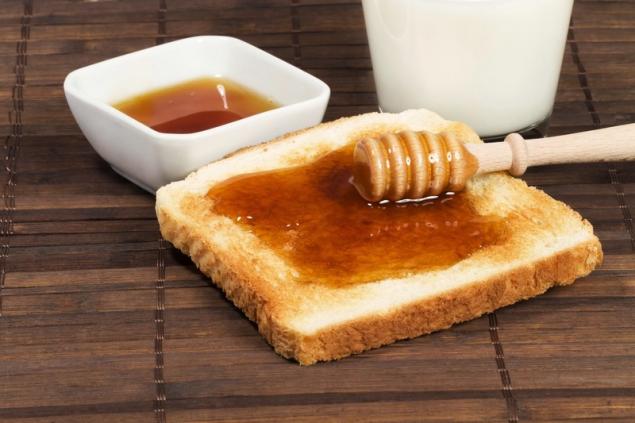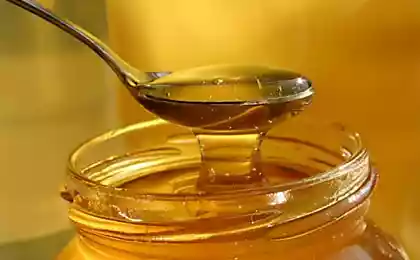554
Useful properties of honey

Since trace elements are involved in metabolic processes, it is impossible to underestimate the beneficial properties of honey in the prevention and treatment of metabolic disorders.
Despite the fact that official medicine is systematically supplemented by the latest in medications that are created as a result of the synthesis of chemical compounds the interest for natural substances with therapeutic properties has been growing steadily. No exception is also the interest of population to honey as a biologically active bee product.
In General apitherapy (apis – bee), of course, not a panacea for all diseases. But honey, propolis, pollen, bee venom, Royal jelly, tinctures of drone brood, dead bees or wax moths in the treatment of certain diseases is literally irreplaceable.
The QUALITATIVE CHARACTERISTICS of USEFUL PROPERTIES Mednikarovo the fact that used in the ailments of bee products affordable enough. This is especially true of the useful properties of honey.
Each variety of honey is inherent to have a very specific color, taste and aroma. Honey color depending on the pigments contained in the nectar, can be as nearly colorless and almost black.
If the honey the amount of water not more than 18-20%, it is considered Mature and suitable for long-term storage. In order to install the maturity of honey, you need to dial it in a spoon and start to rotate. If honey is wound on a spoon and superimposed folds like a ribbon and flows down from it a continuous thread, it is Mature. Unripe honey will just drip off the spoon.
When you use this same simple experience, it is possible to establish whether honey and honeydew falsified. Named varieties of honey with a spoon drawn continuous filaments, while the color of honey stretching the filaments at a certain point are cut off.
If visual inspection honey resembles a thick syrup, then this is another proof that he is natural. But keep in mind the fact that the honey extracted from the honeycomb cells, have the ability to quickly crystallize. Some people mistakenly believe that crystallized honey is a product of low quality. But this is because the process of crystallization of honey is possible only at low levels in the water. That is, the crystallization of honey is indicative still of high commercial quality.
An equally important indicator of the quality of honey is its smell. As the composition of nectar are essential oils, natural honey has a peculiar smell of those plants, nectar which was collected by bees. Each variety of honey has unique, inherent only to this class a unique flavor. Given the fact that the aromatic substances evaporate easily, honey is preferable to store in a glass airtight container. The most valid is the recommended mode of storage is 5 to 10 degrees Celsius.
The length of storage of honey influences its moisture content. When the moisture content more than 21.5% (maximum permissible values), it starts the process of fermentation of honey. To determine its humidity you can use an indelible pencil. If a drop of honey to drop this pencil, the fact of spreading ink stains will indicate that the moisture content of the test batch of honey increased. In the absence of such a reaction is honey good quality.
Sometimes unscrupulous sellers of this widely demanded product is mixed with unripe honey cornstarch or flour. Such additives alter the chemical composition of honey, the downside of it as a medicinal properties and the taste and nutritional qualities. To establish the presence of contaminants in adulterated honey is quite simple. If an aqueous solution of fake honey drop of iodine, the blue will indicate that this honey is starch. If the color does not change, the honey without additives.
The ROLE of trace elements AND VITAMINS of HONEY IN the EXCHANGE of VESHESTV the composition of natural honey contains organic acids, proteins and that is very important for human life, this product has a huge set of microelements and vitamins. At the beginning of last century, the founder of biogeochemistry V. I. Vernadsky proved that the growth and development of the vegetable world is influenced by the composition of the earth's crust. To them, V. I. Vernadsky, it was found that organisms perceive in the environment a significant amount of trace elements.
In the nectar of flowers, and therefore in the composition of honey, found aluminum, boron, barium, beryllium, bismuth, vanadium, germanium, gallium, gold, iron, tin, potassium, cobalt, calcium, magnesium, lithium, copper, manganese, molybdenum, sodium, Nickel, silver, titanium, silicon, phosphorus, and zinc. Chrome, sulphur, chlorine, and zirconium are also present in honey and in the life of man the role as listed, and other micronutrients have been proven. Also from the results of the research found that the higher functional activity of the organ, the more high he feels the need in micronutrients. It is also known that the lack in the body of certain trace elements can lead to the death of a living organism.
These studies lead to the conclusion that the trace elements of honey, actively participating in the process of ensuring the functioning of the body, making this an excellent dietary and therapeutic product in the number is an indispensable tool in the prevention and treatment of metabolic disorders.
The gerontology proved that premature aging is directly related to a sharp depletion of the body's essential trace elements. But a special role in the aging process belongs to the content of potassium and magnesium. Based on this, in any case, it would be a mistake to underestimate the role of the useful properties of honey in the normalization of the functioning of the various organs and systems of the aging human.
In the honey contains vitamins such as C, PP, K, H, provitamin a – carotene, b vitamins, and many others. Such a broad representation of the vitamins in the food product, which is honey, is implemented by the body that aktiviziruyutsya the functional state of the Central nervous system, improves nutrition of the tissues, provided the permeability of blood vessels, stimulates the blood circulation.
About FOOD AND HEALTHFUL FEATURES Medakademii the honey, ascorbic acid, and carotene, enhance the body's resistance to infection, stimulate the production of antibodies that enhance phagocytosis. But, what is very important is the fact that ascorbic acid in combination with water-soluble thiamine (B1) provides adaptation of eyes in the dark, improves visual acuity and expands the field of color perception.
To the characteristics of the useful properties of honey can be attributed to its antimicrobial (bactericidal) and antifungal (fungicidal) ability.
The nutritional value of honey determines its high taste and nutritional quality. The presence of glucose and fructose, easily digestible by the liver, making it an exceptional product at the most various diseases of this organ, for example, infectious hepatitis, cirrhosis of the liver, holetsistopatii and others.
Having a high energy value (per 100 g of honey – 300 calories), honey does not irritate the mucous membrane of the gastrointestinal tract. For those who are watching the calorie content of your diet and suffering from diabetes this feature of the honey should be considered.
There is a scientifically justified recommendation on daily intake of 70 grams of honey for adults, and up to 40 grams. Of course, it would be better to consume honey mixed with fruit and vegetable juices, tea and milk, with mineral water. The recommended daily intake would be helpful to share a few tricks to enable the body to absorb a much larger quantity of minerals and vitamins.
Source: dolgo-zivi.ru























